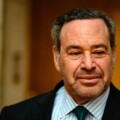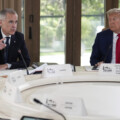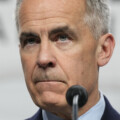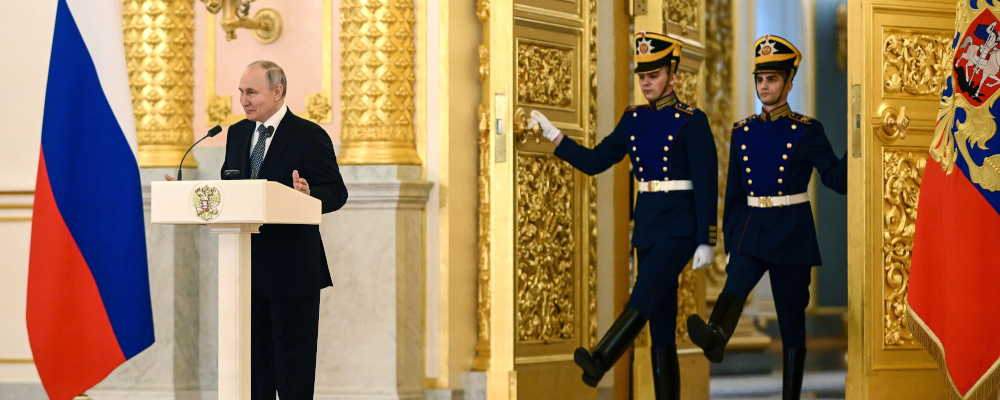All wars end, and the Ukraine hostilities will be no different. With Russia undertaking offensives primarily around Bakhmut and Ukraine preparing its own counter-offensives, the end may seem far off. But someday it will end.
How it does is very much up to Ukraine and Russia, whether by a negotiated settlement that sees Russian troops leaving occupied territory or by Ukraine forcing the Russians out. Achieving a just peace depends largely on how the ground war ends and what compromises are made by the main actors.
Yet now is the time for Ukraine and the West to be planning what happens once the guns turn silent. How should we think about the war in Ukraine and its end game?
First, we need to ensure that Putin’s invasion fails utterly—not only for the sake of Ukrainians fighting for their right to exist but also on behalf of a European rules-based order that Vladimir Putin’s invasion is meant to overthrow.
This will require relentless commitment not only from the Ukrainians, through counteroffensives in the Donbas and possibly Crimea, but from the democratic world itself. To ensure Russia does not topple a democracy on Europe’s doorstep, Western countries have little choice but to continue supporting Ukraine with more ammunition and weapon systems.
Second, the West cannot simply rely on the Americans to continue providing the bulk of this support. Europeans, especially Germany, have the economic heft to do significantly more for Ukraine. Canada should also renew its own military support. To this end, Europe and Canada must accelerate defence production and replenish their depleted munitions and weapon stockpiles sooner rather than later.
The U.S. can and should play a role in backstopping this effort and improve its own weapon production facilities, which have been under duress to sustain sizeable armament deliveries to Ukraine. But with the need to better prepare for military contingencies in the Indo-Pacific—not least Taiwan, where it wants to substantially increase that country’s weapons stockpiles—Washington may not be willing to continue its military largesse to Ukraine indefinitely. It’s time for other countries to stand up.
Third, we need to figure out our post-war approach to Moscow. The war in Ukraine is leaving Russia weakened and isolated. Putin himself is an accused war criminal, while international sanctions promise to further shrink Russia’s economy and reduce its warfighting potential, its vaunted military suffering battlefield losses that dwarf anything it experienced since the Second World War.
If Putin remains in power, it seems unlikely the West can ever reset relations. His history of territorial aggression and brinkmanship speak clearly to his fundamental threat. It’s possible Putin would not survive a Russian defeat in Ukraine, but there is no guarantee a new leader would be any less bellicose, more stable, or represent a break from the past. Thus it is critical to maintain a strategy of containment against Russia for the foreseeable future.
There might be some areas where engagement is necessary, not least when it comes to Russia’s strategic nuclear arsenal—a point recently underscored by the Kremlin’s decision to suspend its involvement in the New Start strategic arms reduction agreement, which led to a slew of contradictory statements on what measures it planned to continue following. Otherwise, Russia remains a dangerous rogue state that needs to be contained, isolated, and militarily declawed. Only a new regime can escape the opprobrium caused by Putin’s criminal actions.
The West should buttress its military depth across NATO countries, while maintaining sanctions to limit any post-war rebuilding of Russia’s forces. Forward-deployed NATO forces in Eastern Europe and the Baltics—including in the newest NATO country Finland—will ensure a sizable and punishing response to any potential Russian military adventurism there. Europe and Canada should take the lead on this and enable the Americans to pivot more to the Pacific.
Fourth, the recent and much-hyped “summit” between China’s Xi Jinping and Russia’s Putin brought their “marriage of convenience,” to quote U.S. Secretary of State Antony Blinken, into sharp relief. (Blinken called Russia the “junior partner” in this partnership—and it is hard to disagree with that assessment.)
One clear consequence of Russia’s struggle in Ukraine is its increased reliance on China. Beijing likely enjoys seeing the West committing energy and resources to containing Putin, even if the scenario inflames tensions between Beijing and the West and places China in the Catch-22 of escalating hostilities by arming the Russians. Moscow will be no more comfortable playing a junior role to China than Maoist China was with the Soviet Union.
Any hopes of somehow detaching Russia from China’s sphere of influence remain fanciful so long as Putin’s kleptocratic, siloviki-dominated regime remains in power. Instead, Putin will likely only accelerate his country’s further decline into being a regional, subordinate power within China’s hegemonic orbit. As Russia becomes more dependent on and resentful of China’s strategic largesse, this relationship could magnify tensions between both countries. If it hopes to take advantage of such Sino-Russian discord, the West will need to wait patiently until a new and fundamentally different regime emerges in Moscow.
Fifth, Ukraine will need a significant infusion of funds to rebuild its country. The World Bank estimates this will cost US$411 billion over the next decade. It is no exaggeration to say the West will need to support Ukraine with its own Marshall Plan to recover from this disastrous war—and partly for the same reasons.

An economically prosperous Ukraine would not only be a valuable addition to the European community and resilient bulwark against Russian influence, but—much as Western Europe’s success magnified its contrast with Eastern Europe’s listless Soviet satellites—it would also be a useful mirror to the kleptocratic nihilism of Putin’s regime, hopefully fuelling internal pressures within the Russian state itself.
Just as Western countries proved resolute in supporting Ukraine in wartime, we must show the same resolve when it comes to helping the country get back on its economic feet in peacetime, including supporting its path to full membership in the European Union. As a wealthy G7 nation, Canada has a role to play in propelling these post-war reconstructions.
Sixth, Ukraine’s allies must ensure that Russia never again attempts such territorial aggrandizement. Western countries should continue their training and capacity-building programs (including Canada, given its past involvement with Operation Unifier) while expanding their defence production capacity to support Ukraine with an expansive rearmament program.
This “porcupine” strategy—a concept often used in reference to Taiwan—would seek to deny Russia the means to successfully seize and hold Ukrainian territory. This approach is meant to prevent Russia from achieving its war objectives in order to deter them from invading and to deny them victory if that fails. Ukraine will likely emerge from this war with the most battle-hardened military in Europe with extensive experience fighting Russians, so such a strategy seems particularly well-suited for them.
Some of the military capabilities to be prioritized include long-range and high-altitude air defences; anti-tank weapons; long-range artillery and missile systems capable of hitting logistic hubs deep in Russian territory; landmines; anti-ship missiles; defensive fortifications; and the continued transfer of advanced Western battle tanks and armoured vehicles. Other priority measures include civil defence, critical infrastructure protection, and preparation for urban warfare.
Lastly, the West must offer Ukraine security guarantees. NATO membership would be controversial. Some members believe that even a post-Putin Russia would never accept such an arrangement, however, this must be weighed against the fact Russia has never dared to invade a NATO country—though that has never been tested against a country, like Ukraine, which Russia has both invaded and partly annexed. Irrespective, given the Alliance’s need for consensus, it will be an uphill climb to bring Ukraine into NATO’s fold.
Alternatively, key NATO countries could offer bilateral security guarantees to Ukraine, an initiative that could involve the entire Atlantic Alliance.
In either case, some Western countries would need to deploy military forces in Ukraine, acting as a “tripwire” to ensure an allied response to any Russian incursion. It also complements the above-mentioned denial approach. After all, given Ukraine’s strategic depth due to its geographic size and its porcupine strategy, Western countries would have enough time to mobilize a counterattack long before a Russian victory becomes a fait accompli.
In sum, Russia’s invasion of Ukraine has upended the post-war European order; there is no going back to business as usual with Putin. The West must keep that end in mind as it supports Ukraine while making sure that its rightful and immediate emphasis on Europe does not detract from focusing on the long-term, global strategic challenge posed by China.
Importantly, the West must remain united in providing security guarantees to Ukraine. This cannot be another version of the Budapest Memorandum, where our promises to Kyiv proved worthless.
Ukraine has already stood up against Russia. The West will need to do the same.
Recommended for You

‘You have to meet bullying with counter-bullying’: David Frum on how Canada can push back against Trump’s trade negotiation tactics

‘Our role is to ask uncomfortable questions’: The Full Press on why transgender issues are the third rail of Canadian journalism

Need to Know: Mark Carney’s digital services tax disaster

Theo Argitis: Carney is dismantling Trudeau’s tax legacy. How will he pay for his plan?



